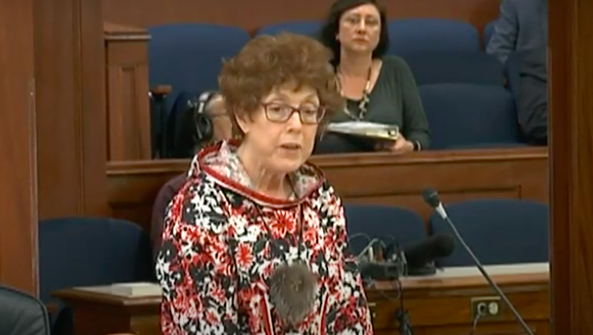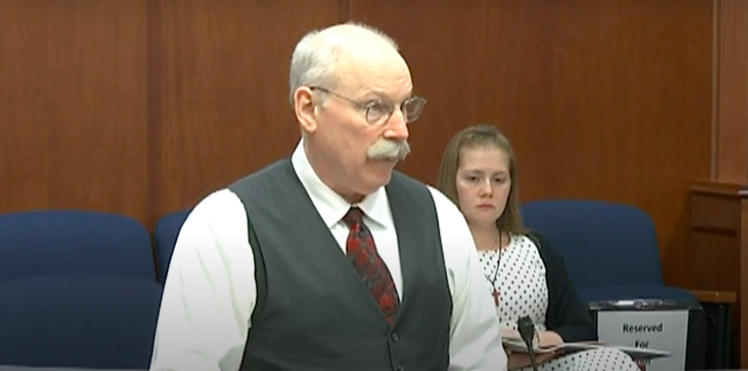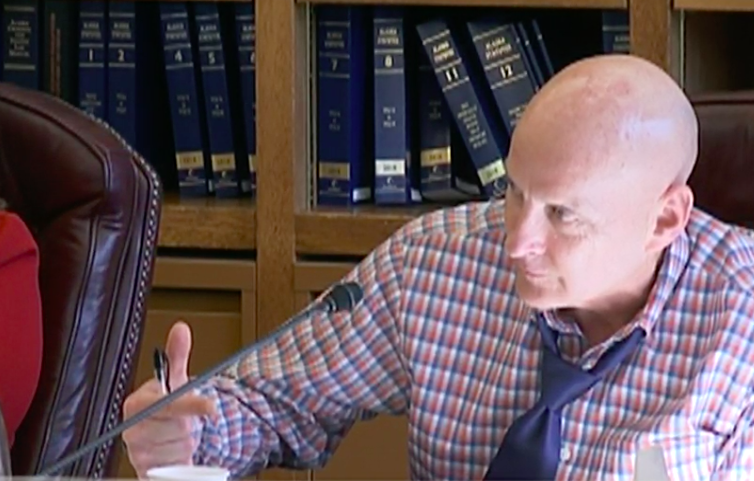SYMBOLIC VOTE OVER PERMANENT FUND DIVIDEND AMOUNT CAUSES RIFT
In a move that surprised some and delighted others, Rep. Gabrielle LeDoux, a nominal Republican from Muldoon, today broke away from the House Democrat-led Majority, and voted in favor of the Senate’s version of the operating budget.
That was tantamount to voting against the House Majority’s budget that she had voted for days earlier.
“I do not do this lightly because the bipartisan caucus is a binding caucus, demanding we all vote on budget votes. So I know that there are going to be consequences for this vote. But I am willing to live with this decision, Mr. Speaker,” LeDoux said, addressing the chair during what is normally a procedural vote.
She worried aloud about the Senate budget, even as she said she would vote in favor of it, because it cuts the ferry system too much and transfers too much money from the Earnings Reserve Account of the Permanent Fund into the corpus of the fund, “leaving us with no leeway in a market downturn.”
But she said the sticking point for her was that the fully funded Permanent Fund dividend is important to her East Anchorage constituents. And she felt that since the House budget does not contain any money at all for the Permanent Fund dividend, this was her only possible chance to vote affirmatively for the full dividend.
Whatever comes back from the conference committee will likely have a much smaller dividend than the $3,000 that the Senate has set in its budget (as the House has not provided any funds for Permanent Fund dividend yet.)
“Where our (House) budget has no PFD, and the thought was to discuss and debate the PFD in a separate bill. But I don’t see this happening right now,” she said, her voice quavering.
“It makes me sad I will be leaving this caucus where I have many friends. I feel those who vote against concurrence feel they are doing the right thing. I am doing the right thing voting in the way my constituents would want me to vote,” she said.
She then reminded the body of how the original group of “Muskox Caucus” rebellion against the Republican Majority in 2015 got started, by reading them a letter that four of them in the Chamber had penned to Speaker Mike Chenault in 2015. In that letter, signed by Ledoux, and Reps. Louise Stutes, Bryce Edgmon, and Neal Foster, the four said that any major changes to the way the Permanent Fund dividend was handled should go to a vote of the people.
Muskox-Coalition-letter-May-20-2015-Page 1
Muskox-Coalition-letter-May-20-2015-Page 2
The other two who signed the letter, Reps. Jim Colver and Paul Seaton, have since been removed by their constituents, who considered them not reliable Republicans.
LeDoux was the only member of the House to end up voting in favor of the Senate budget today. Several rose to speak against the Senate budget for reasons ranging from “It’s unfunded” to “it cuts too much.”
Rep. Louise Stutes stood a few minutes later to curtly address the matter of the letter she had signed, which had been read aloud by LeDoux.
Stutes said, “That was then and this is now. I did sign that letter.” She went on to say that services were needed across the state and that the Legislature’s “Percent of Market Value” approach to the Permanent Fund dividend was satisfactory in addressing a reduced dividend amount.
LeDoux’s vote was largely symbolic, since she had, in fact, voted in favor of the House budget last week and since the House and Senate budgets were clearly going to the conference committee, where they will be negotiated line by line.
And after all, the House Majority still has 24 members in it, a safe majority. But her move is a blow to the leadership of Rep. Bryce Edgmon, who looked shaken during the rest of the floor proceedings.
If the Republican Minority allows LeDoux to rejoin them, they’ll have 16 members — possibly enough to help Gov. Michael Dunleavy preserve vetoes he might make to the final budget.
It takes a total of members of the House and Senate to override a governor’s veto.
LeDoux’s move gives the minority a slight emotional advantage going into next year and may persuade members like Rep. Bart LeBon and Steve Thompson to rejoin the Republicans.
As for Dunleavy, he can veto spending in the budget sent to him by the House and Senate, but if he’s sent a budget with a smaller Permanent Fund dividend than has been established by Alaska Statute, he will not be able to add money back to that dividend.









